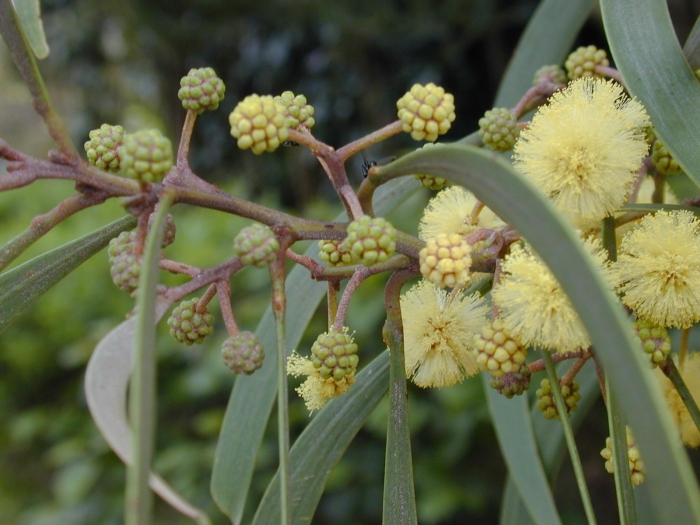Koaoha
(Acacia koaia)
Koaoha (Acacia koaia)
/
/

Forest & Kim Starr
CC BY 3.0
Image By:
Forest & Kim Starr
Recorded By:
Copyright:
CC BY 3.0
Copyright Notice:
Photo by: Forest & Kim Starr | License Type: CC BY 3.0 | License URL: https://creativecommons.org/licenses/by/3.0 | Uploader: BotMultichill | Publisher: Wikimedia Commons | Title: Starr_020124-0065_Acacia_koaia.jpg | Notes: Transferred from Flickr via [[Commons:Flickr2Commons|Flickr2Commons]] |






























Estimated Native Range
Summary
Acacia koaia, commonly known as Koaoha, is an evergreen tree endemic to the dryland forests of the Hawaiian Islands, particularly on the islands of Maui and Hawai’i. It is a smaller and less common relative of Acacia koa, adapted to the unique ecological conditions of Hawaii’s upland regions. Koaoha typically grows to a height of 16 feet (5 meters) and is characterized by its short, broad, and gnarled form. The tree’s dense wood is highly valued for its rich color and grain. The phyllodes, which are modified leaf stems that function like leaves, are shorter and straighter than those of its close relative, Acacia koa. Koaoha produces yellow flowers in the spring, which are arranged in spherical clusters and are less showy compared to other flowering trees.
Koaoha is appreciated for its cultural significance and the beauty of its wood, which is used in traditional Hawaiian woodworking. It is suitable for xeriscaping due to its low water requirements and is sometimes used in reforestation projects within its native range. The tree prefers full sun exposure and thrives in well-drained soils. While it is not commonly found in cultivation outside of Hawaii, it can be a unique and valuable addition to gardens within its native range. Koaoha’s dense wood and slow growth rate make it less suitable for rapid landscape development, but its rarity and cultural importance add to its desirability as a conservation species.CC BY-SA 4.0
Koaoha is appreciated for its cultural significance and the beauty of its wood, which is used in traditional Hawaiian woodworking. It is suitable for xeriscaping due to its low water requirements and is sometimes used in reforestation projects within its native range. The tree prefers full sun exposure and thrives in well-drained soils. While it is not commonly found in cultivation outside of Hawaii, it can be a unique and valuable addition to gardens within its native range. Koaoha’s dense wood and slow growth rate make it less suitable for rapid landscape development, but its rarity and cultural importance add to its desirability as a conservation species.CC BY-SA 4.0
Plant Description
- Plant Type: Tree
- Height: 60-70 feet
- Width: 20-25 feet
- Growth Rate: Rapid
- Flower Color: Yellow
- Flowering Season: Spring
- Leaf Retention: Evergreen
Growth Requirements
- Sun: Full Sun
- Water: Low, Medium
- Drainage: Medium, Fast
Common Uses
Bee Garden, Bird Garden, Drought Tolerant, Edible*Disclaimer: Easyscape's listed plant edibility is for informational use. Always verify the safety and proper identification of any plant before consumption., Hummingbird Garden, Low Maintenance
Natural Habitat
Endemic to the dryland forests of the Hawaiian Islands, particularly on the islands of Maui and Hawai’i
Other Names
Common Names: Koai’E, Koai‘A, Koai‘E
Scientific Names: , Acacia koaia,
GBIF Accepted Name: Acacia koaia Hillebr.